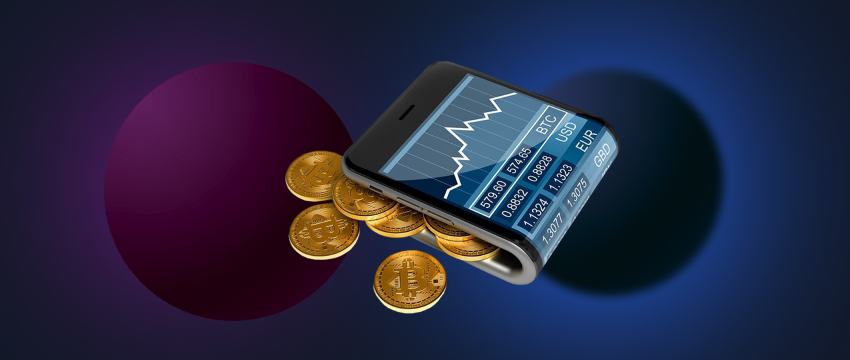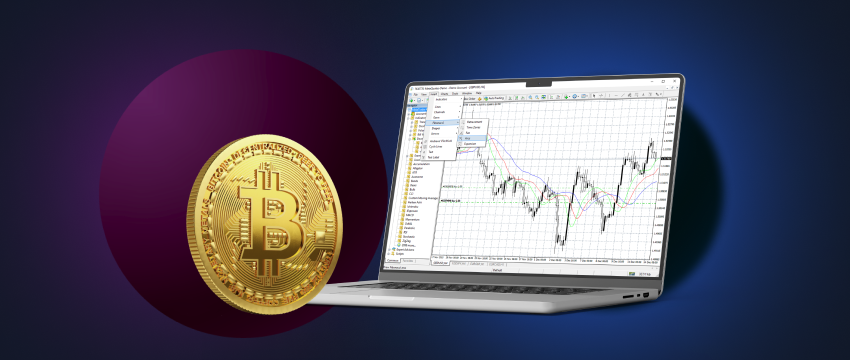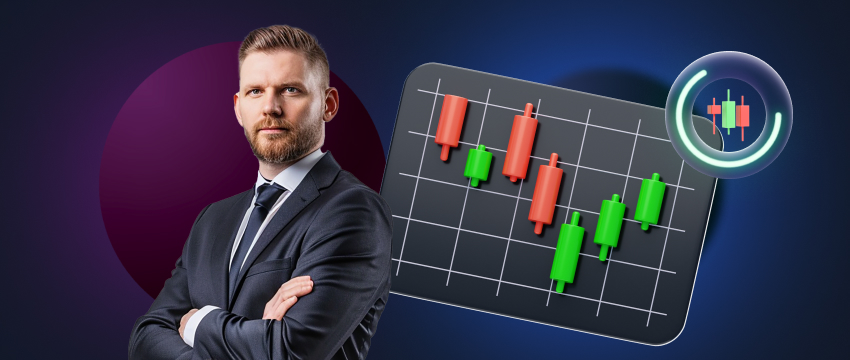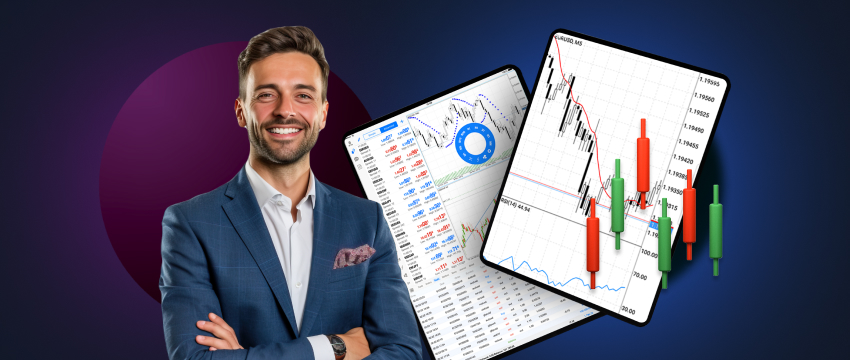CFD stands for Contract for Difference. In simple terms, it’s an agreement that a trader enters into with a broker, enabling him or her to speculate on the price movement of the CFD’s underlying asset in an attempt to make a profit. The underlying asset may vary. It could be stocks, metals, commodities, and possibly, even a cryptocurrency.
The trader will vigilantly monitor the market in anticipation of the direction that the price of the specific asset will take. The trader will speculate whether the price will go up or down and then open either a long or short position accordingly.
In other words, if the forex traders believes that the price of an asset will rise, he’ll usually go long. If however the trader anticipates that the price of the asset will fall, they may decide to go short.
Key features of CFDs
Traders worldwide are attracted to several core components that make up CFD trading:
- CFD traders are renowned for leverage trading. This is in an attempt to maximize limited capital for larger exposure to try and make more gains. However, leverage is a dangerous game. Yes, it can see you earn great returns. But, it can also see you lose big if mishandled or monitored ineffectively.
- CFD traders may use CFDs as a way to diversify their portfolios. Seeing as the underlying asset varies, the trader gets to spread the risk across different markets. If one moves in an adverse direction. The trader has others to fall back on provided he or she has spread the investment too, as opposed to investing all their capital into one trade.
- As already mentioned, CFD trading gives traders access to a massive range of financial markets. They can opt to trade in multiple markets across different trading sessions, widening their scope of trading opportunities.

What is a cryptocurrency?
A crypto currency is a digital or virtual currency. It is typically exists on decentralised networks that utilise blockchain technology. Cryptocurrencies have become extremely popular across the globe for a variety of reasons.
Considered to facilitate cheaper and faster transactions, they operate in a decentralized system. This means they are not subject to the control of third-party intermediaries like banks or governmental institutions. However, they do come with some significant disadvantages. For one, they’re highly volatile. Secondly, people widely recognize their use in criminal activities, as well as their high energy consumption due to mining.
Interesting cryptocurrency stats & facts by Statista
Cryptocurrencies are renowned for performing in the most unpredictable manner. While this may make cryptocurrency trading a somewhat exhilarating experience, its one fraught with tension and loss too. Let’s see how the digital currencies market fared in 2023 according to Statista:
- “Crypto 24h trading volume declined as 2023 progressed, with figures being one-third lower than in 2022. The decline follows after Binance and Coins. Two of the biggest crypto exchanges in the world – received lawsuits in the United States.
- Bitcoin’s trade volume slowed in the second quarter of 2023, after hitting a noticeable growth at the beginning of the year. The coin outperformed most of the market. Some attribute this to the announcement in June 203 that BlackRock filed for a Bitcoin ETF.
- Ethereum’s trade volume changed in 2023 due to the rollout of the Shapella (Shanghai and Cappella) upgrade. The update allowed investors to withdraw (unstake) Ethereum deposited into the network.”
- Also according to Statista, “At the end of August 2023, the Ethereum digital currency would be processed more than one million times per day on-chain. This was about twice times that of the more commonly known rival Bitcoin, which saw only 550,000 daily transactions that month. Other leading digital currencies also saw significantly less transaction activity.”
Other interesting stats for 2023 by the Economic Times are as follows:
- “The year 2023 was one of the best years in the history of cryptocurrencies, as blue chip crypto tokens Bitcoin and Ethereum delivered their investors returns of over 155% and 90%, respectively.
- The prices of some crypto coins (top 100 by market cap) increased by up to 9600% in 2023.
- Apart from the world’s top two digital currencies, other popular crypto tokens like Solana remained on top with 965% returns. Avalanche (266%), Cardano (147%), Polkadot (96%), Tron (95%), XRP (82%), BNB (31%), Dogecoin (30%), and Shiba Inu (30%) were other top tokens.
- As far as the top 100 cryptocurrencies are concerned, BONK remained the top crypto gainer in 2023 with an increase of over 9600%.”

CFD trading and risk management
Seeing as the underlying asset differs from contract to contract, CFD trading is wildly impacted by market fluctuations and price volatilities brought about by geopolitical instability, financial news, economic releases, investor sentiment, inflation rates, interest rates, and many more. Factor in leverage and a trader is largely at risk of losing their money if proper risk management measures are not adhered to. This is why CFD traders are better off having a risk management plan in place to safeguard their funds.
Common risk management techniques include stop-loss orders, take-profit orders, and trailing stops. Other techniques a CFD trader may use are optimal position sizing, avoiding the temptation of overtrading, being wary of overleveraging, etc. This risk management plan should align with the trader’s overall trading strategy, trading objectives, budget, and risk tolerance.
Managing cryptocurrency risks
Similarly to CFDs, investors typically follow some form of risk management when dabbling in crypto trading. Some of the key rules crypto enthusiasts follow to mitigate large losses are as follows:
- Never investing more than you can afford to lose. This could be considered a basic trading rule but is one commonly adopted in crypto trading. While crypto trading may see you earn big profits, there are probably just as many novice and even professional traders who’ve lost huge sums of money investing in crypto for a multitude of reasons. This could include a change in government regulations, or falling prey to a scam.
- Avoid putting all your eggs in one basket. Essentially this means investing in more than one crypto rather than putting all your money into just one. By diversifying your portfolio, you’re spreading the risk, much in the way a CFD trader does by speculating on more than one type of underlying asset.
- Identify the level of risk you’re willing to handle. Assess your budget and your life goals. For example, are you close to retirement? If the answer is yes, then ask yourself how much you’re willing to lose without putting your retirement fund at risk. The same logic could be applied if you’re thinking about making a home purchase or have saved up for college. Never jeapordise your savings.
Invest your time in learning
Regardless of whether you choose to engage in CFD trading or start investing in different cryptos, learning how to become more skilled at either activity is vital to mitigate all forms of risk. But what does this mean? Well, there a ton of resources available to all types of traders online.
They’re often available to access for free and provide a way for individuals to learn more about how to trade or invest their capital. However, always do your research on who you’re learning from. Ensure the educator is a reputable trader or professional in the field of CFD or crypto trading. Don’t fall victim to anyone promising you 100% returns or unfathomable amounts of profits. Instead, learn from someone who can boost your capabilities and expertise.
For those looking to engage in CFD trading, signing up for a demo trading account is a fantastic way to hone your skills without having to make use of your own funds. A demo account will give you a simulated trading environment in which you can execute a variety of trades using virtual funds, and monitor performance. You can learn how to use technical and fundamental analysis to make informed trading decisions, and to better understand live market conditions. Using a demo trading account also gives you the time to build up your confidence as a trader before moving over to live trading.

Why trade with T4Trade?
There are many reasons to choose T4Trade, a powerful global broker. For one, they offer a range of trading accounts to meet a variety of different needs. T4Trade also provides access to over 300 trading instruments with some of the most competitive and flexible trading conditions.
Traders can also enjoy flexible leverage, tight spreads, fast withdrawals and deposits, quick executions, and 24/5 multilingual, top-tier customer support.
Penafian: This material is for general informational and educational purposes only and should not be considered investment advice or an investment recommendation. T4Trade is not responsible for any data provided by third parties referenced or hyperlinked in this communication.




